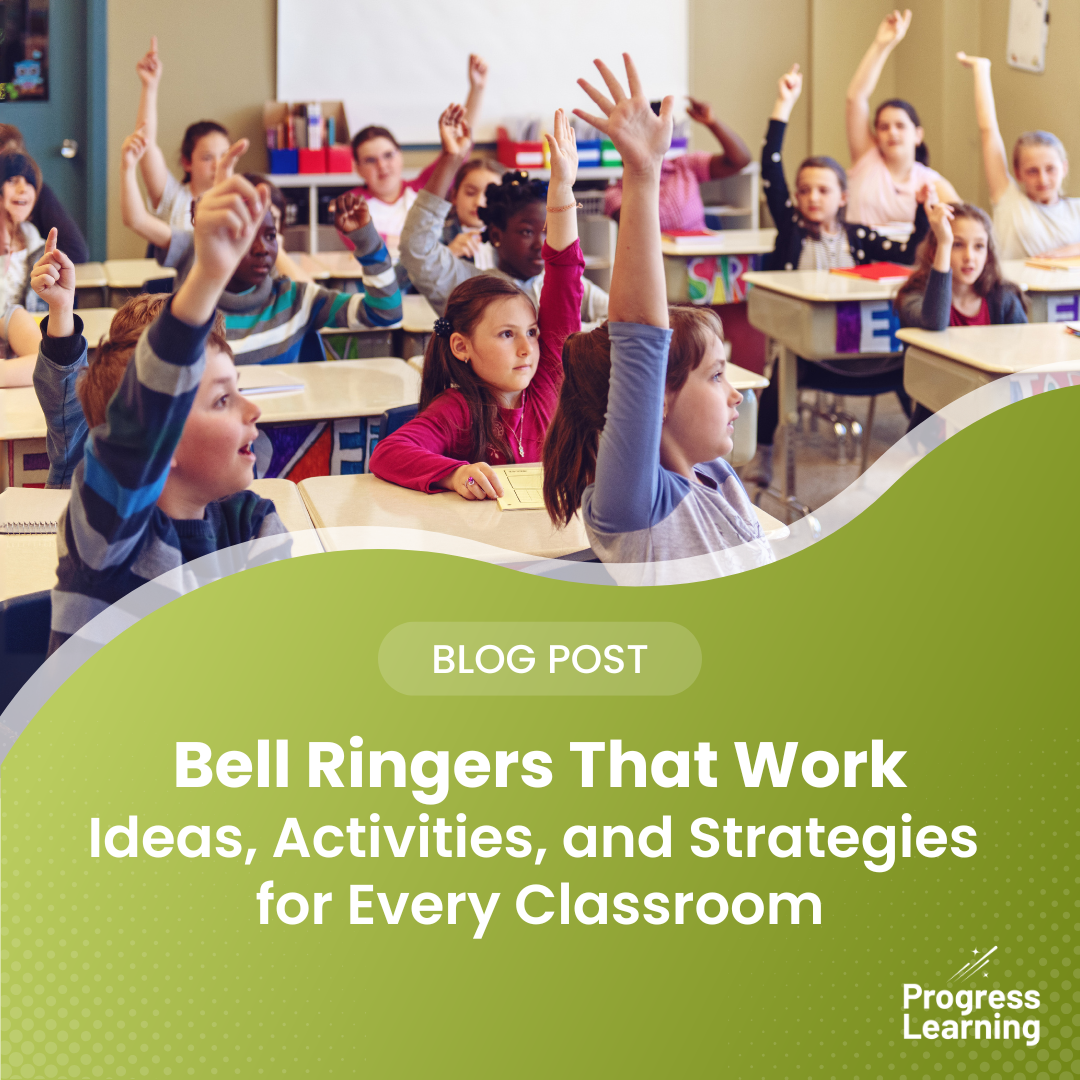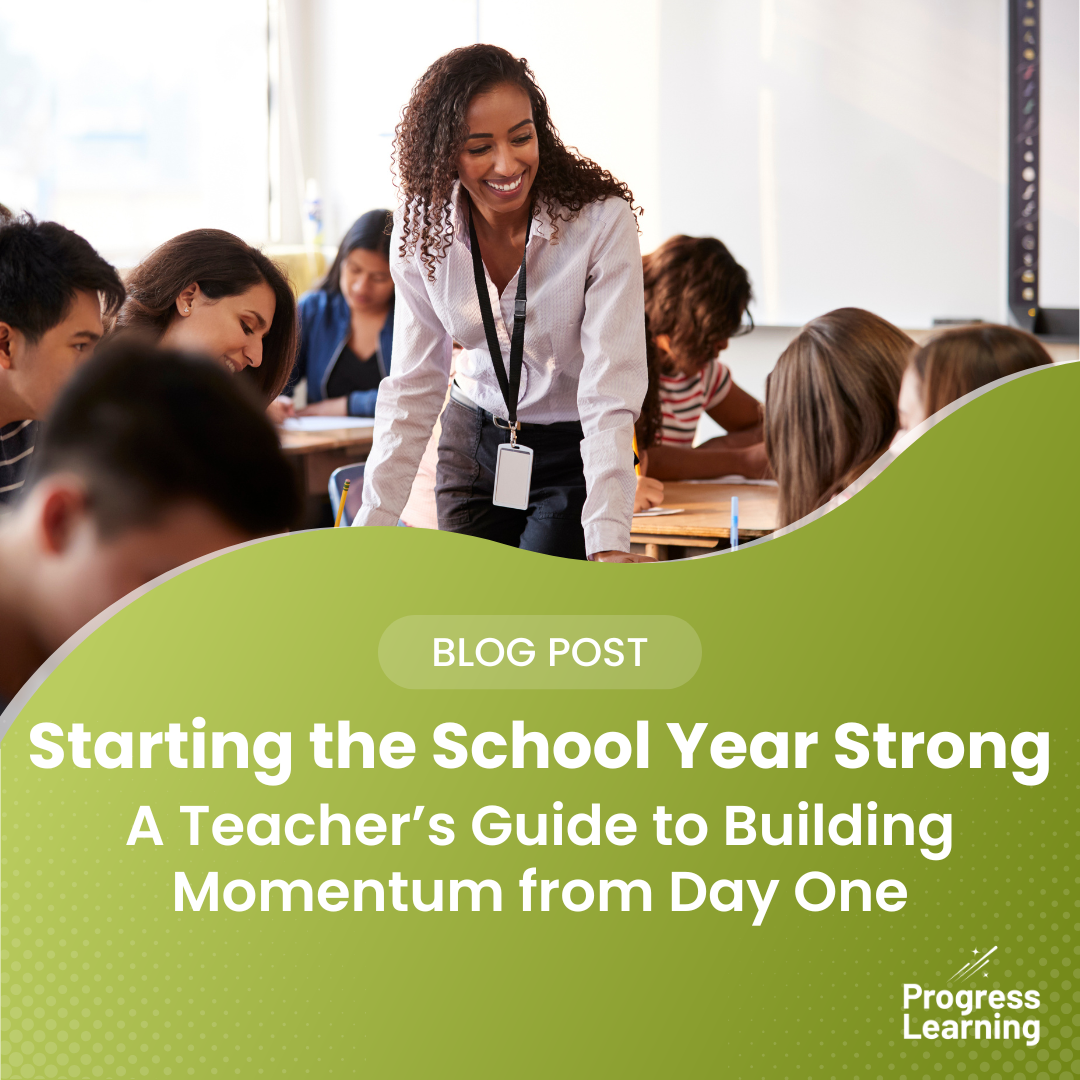Engaging Minds: Teanna Moore’s Blueprint for Effective and Engaging Teaching
What does it take to keep today’s students truly engaged? According to Teanna Moore, the answer lies in blending intentionality, inclusivity, and innovation with good, old-fashioned relationship-building.
On August 29, 2025, Progress Learning hosted Engaging Minds: Strategies for Effective and Engaging Teaching, a fast-paced and deeply reflective webinar led by Teanna Moore. In just 30 minutes, Moore delivered a compelling roadmap for any educator seeking to build stronger connections, foster deeper learning, and bring more joy into the classroom.
Meet the Speaker
Teanna Moore is a 3rd grade ELA teacher at CIVICA Nevada Career & Collegiate Academy with over five years of classroom experience. Known for her student-centered, relationship-first approach, Moore specializes in literacy instruction, writing workshops, and critical thinking. But what sets her apart is how seamlessly she integrates differentiated instruction, technology, and culturally responsive practices into her daily teaching. Her passion? Creating classrooms where every student feels seen, supported, and challenged.
Why Engagement is Foundational
Moore opened the webinar by addressing a reality many educators face: “Today’s classrooms are more dynamic and diverse than ever.” Engagement, she emphasized, isn’t an add-on—it’s the engine that drives everything else.
Why does engagement matter?
- It improves academic success and critical thinking.
- It enhances classroom behavior and motivation.
- And most importantly, it cultivates a lifelong love of learning.
“Engagement equals deeper learning and lasting impact,” Moore reminded viewers. “And when you prioritize engagement, everything else becomes possible.”
Teanna Moore’s Core Strategies for Student Engagement
Moore’s approach to student engagement is grounded in both research and her own classroom practice. She outlined six main strategies to help educators engage every learner.
1. Active Learning
Moore encourages educators to move beyond lecture and make space for student interaction.
- Think-Pair-Share: “It’s simple, but so effective. Students get to hear themselves think out loud before sharing with the class.”
- Inquiry-based learning: Build curiosity by starting with questions, not answers.
- Hands-on projects and experiments: These promote deeper engagement and help students connect abstract concepts to real life.
2. Technology as a Tool
“Technology is a tool, not a crutch,” Moore reminded the audience. When used well, it enhances learning without becoming a distraction.
- Use platforms like Kahoot, Nearpod, and Flip for interaction and feedback.
- Gamification: “Students love the challenge of earning badges and progressing through levels on Progress Learning. That competitive element motivates them in ways worksheets never will.”
- Digital storytelling: “It gives students ownership. When students create, they remember. They care.”
3. Culturally Responsive Teaching
“Students need to see themselves in the curriculum,” Moore stated. This helps students feel seen, valued, and connected to their learning.
- Connect lessons to students’ backgrounds and experiences.
- Select inclusive materials and perspectives.
- Create space for students to express and celebrate their identities.
4. Collaborative Learning
Moore encourages educators to make learning social and student-driven.
- Promote peer teaching and group projects.
- Use discussion and debate to build critical thinking.
- Strengthen communication and teamwork skills through cooperative structures.
5. Differentiated Instruction
Moore stressed that one-size-fits-all teaching leaves too many students behind. “Differentiation isn’t about making things easier,” she said. “It’s about making sure all students can access the learning.”
- Adapt lessons to meet individual needs.
- Use scaffolding and tiered assignments.
- Offer students choice in how they demonstrate mastery—through presentations, essays, art, or other formats.
6. Relationship-Building
Moore emphasizes that meaningful teacher-student relationships are at the heart of every effective engagement strategy. “You can have the best lesson plan in the world, but if your students don’t feel safe and respected, they won’t engage,” she explained. “Students remember how you made them feel. That’s where real engagement starts.”
To build those relationships, she recommends:
- Making daily, intentional connections with each student
- Creating a classroom environment that feels safe, inclusive, and respectful
- Using consistent encouragement and positive reinforcement to build trust and motivation
Bringing It All Together
Teanna Moore’s Engaging Minds session wasn’t just another PD—it was a reminder of why teaching matters. Her message was grounded in research, rooted in real classroom experience, and delivered with authenticity and warmth.
For educators looking to build stronger relationships, embrace inclusive practices, and bring more energy into their instruction, this webinar was a masterclass in what’s possible.
Moore closed with this challenge: “Try just one new strategy this week. Just one. You’ll be surprised how far it can go.”
Want to see these strategies in action?
Watch the full Engaging Minds: Strategies for Effective and Engaging Teaching webinar led by Teanna Moore and gain even more practical insights you can bring into your classroom right away.
Missed the webinar? Subscribe below to be notified about new webinars and join live.


